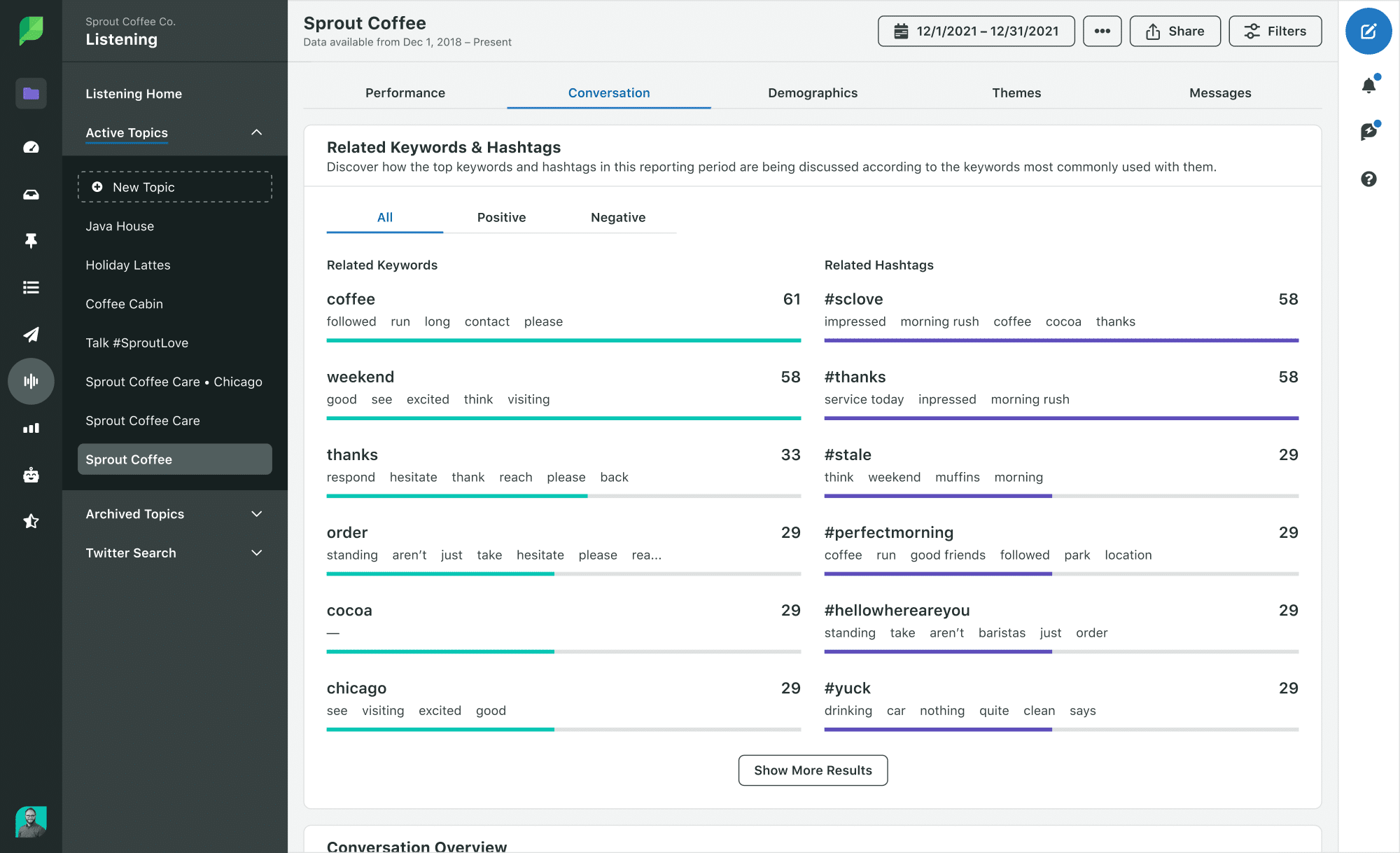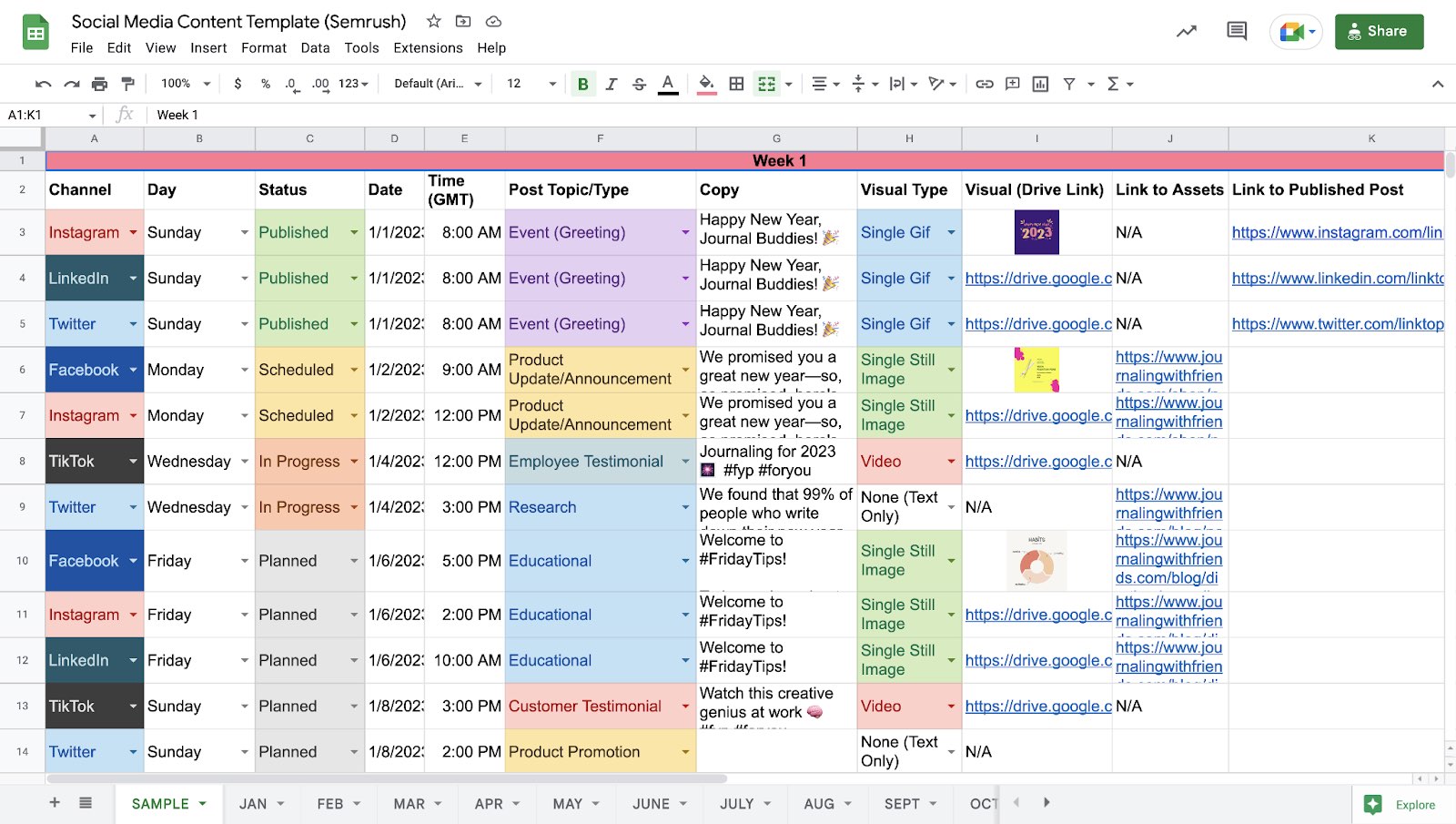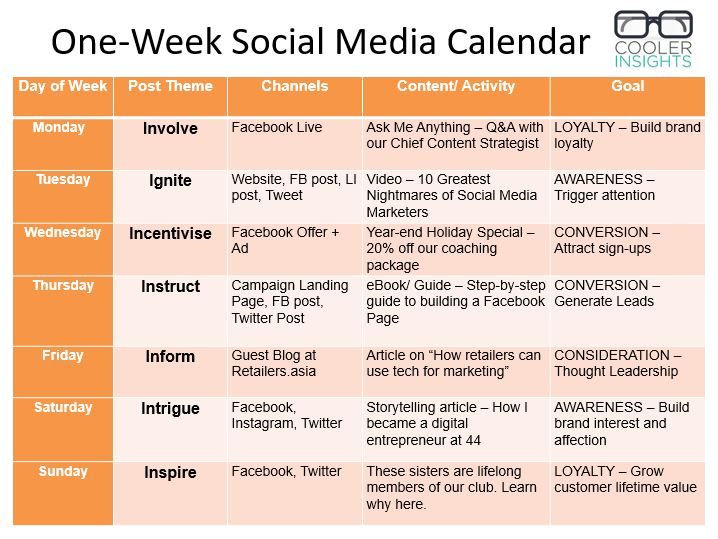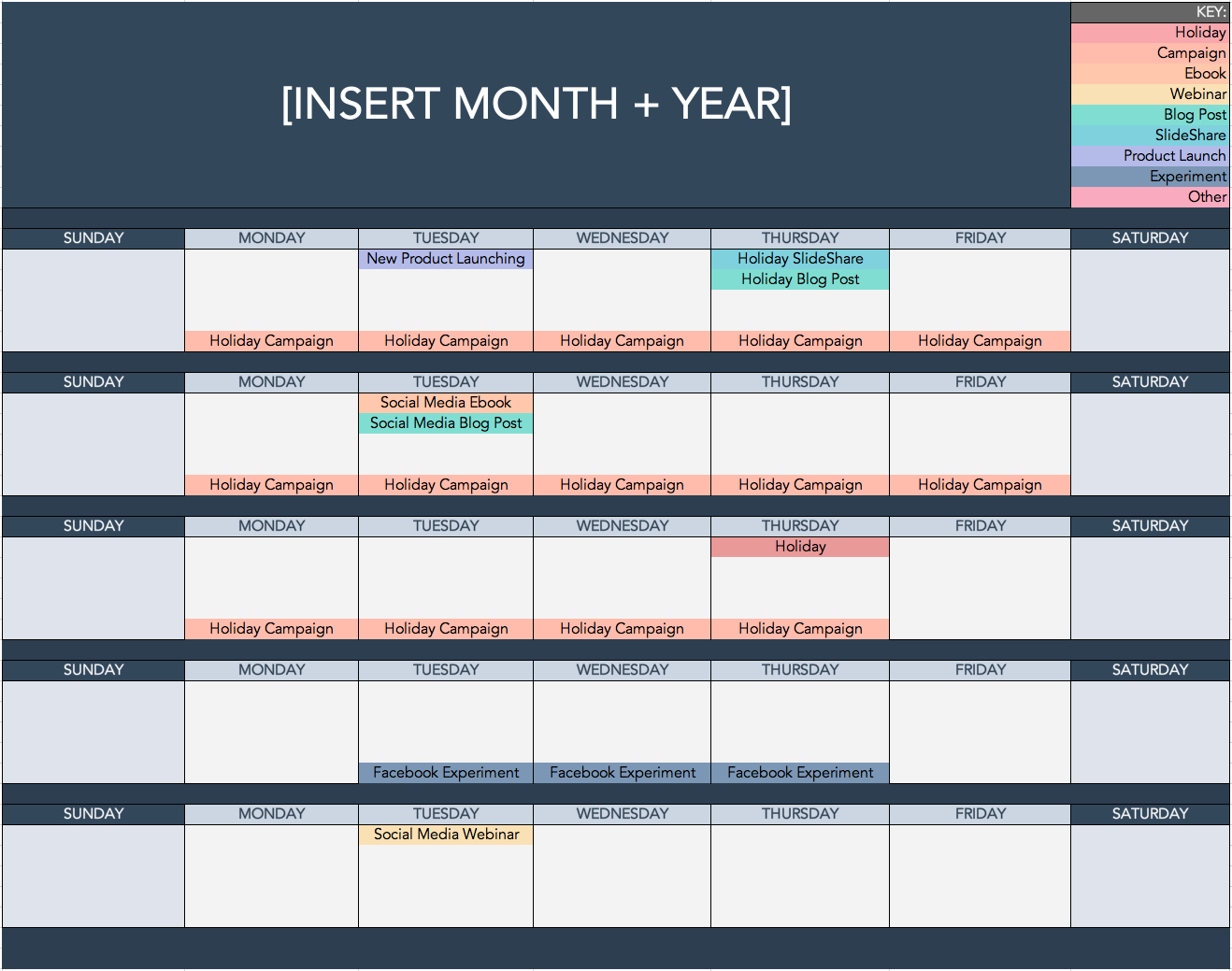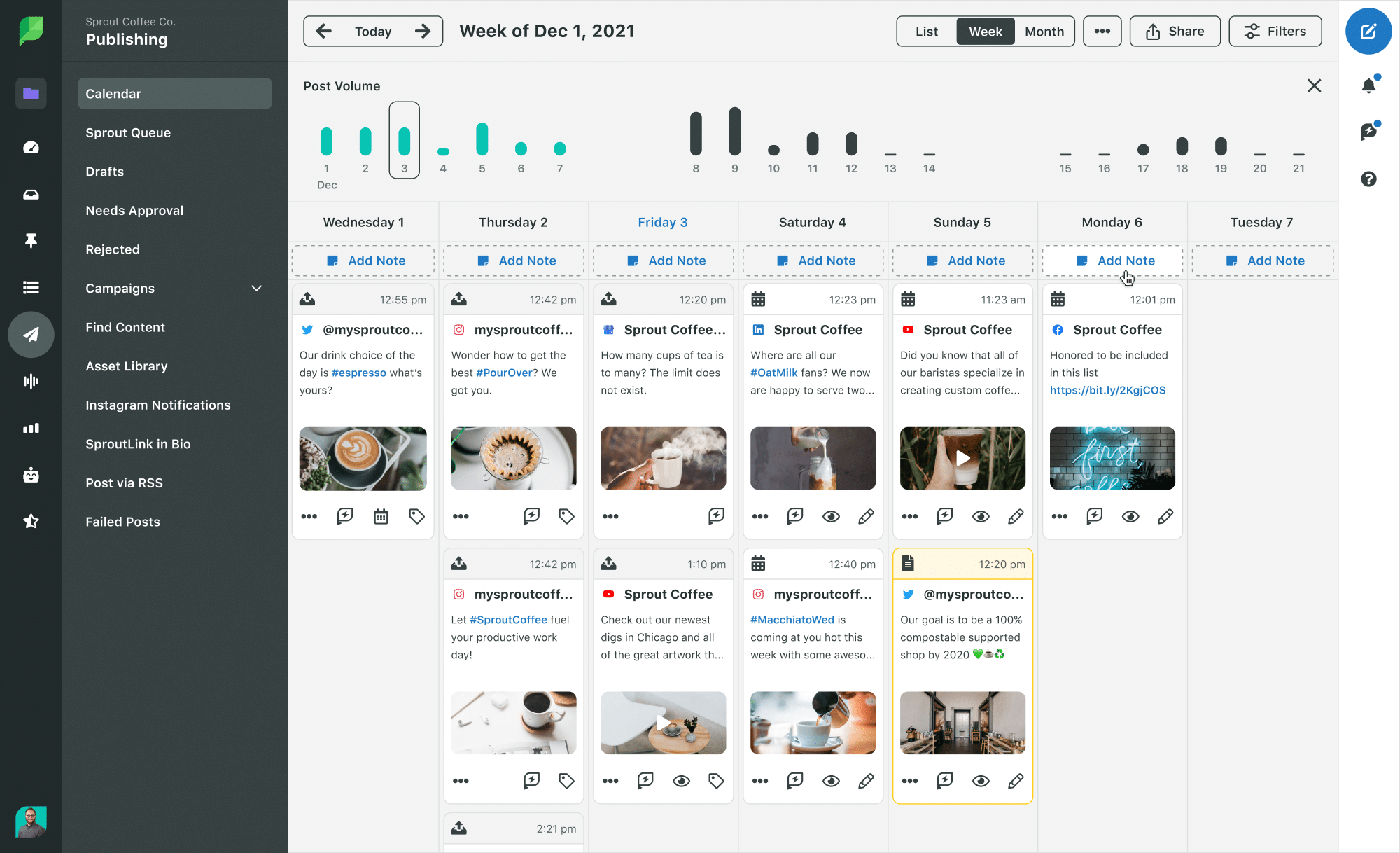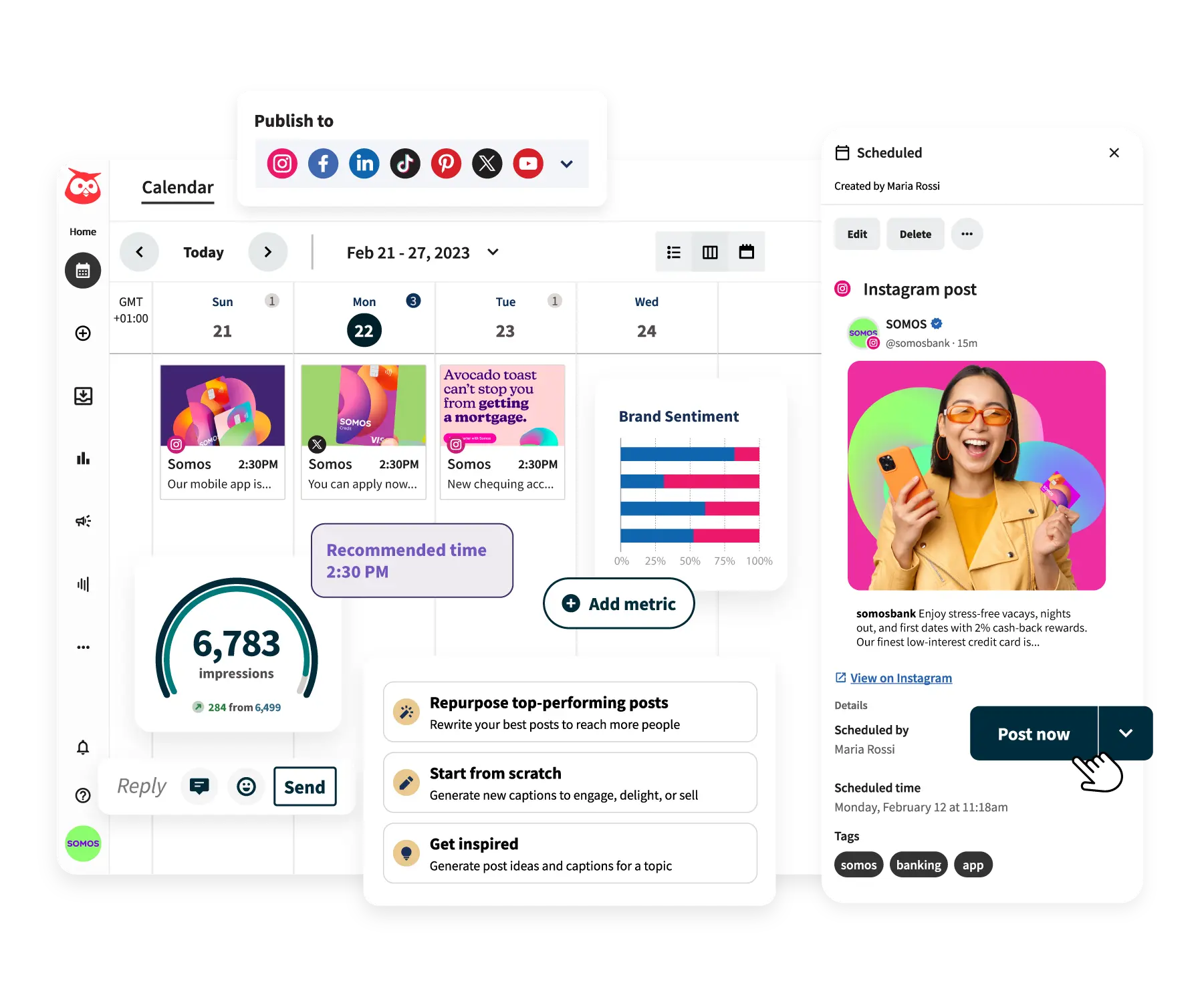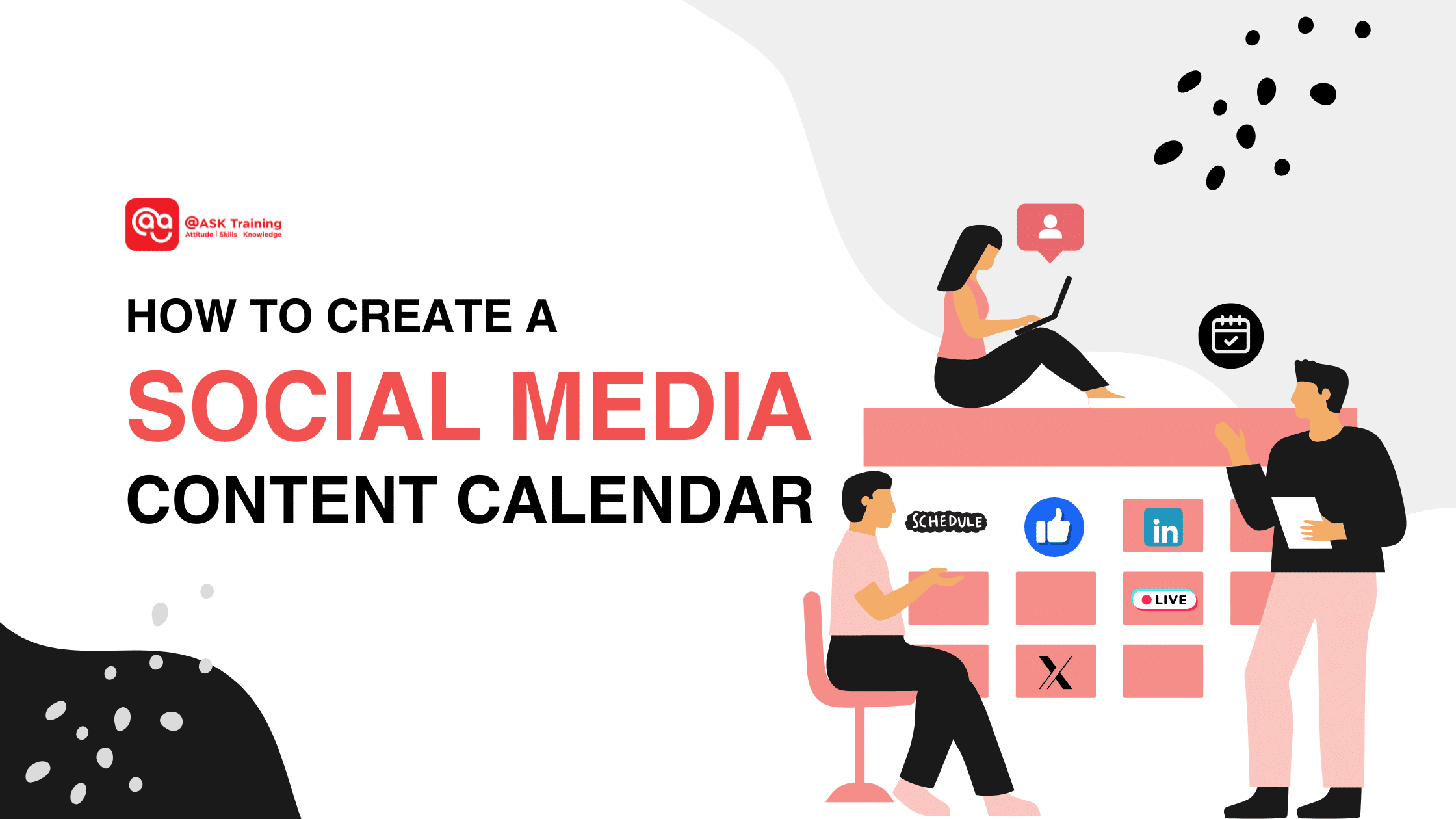
Singapore is becoming a Smart Nation as it continues to raise the bar for digital adoption. Social media is increasingly important now in the daily lives of Singaporeans. The number of verified social media users has also increased to 89.5% of Singapore’s population. Therefore, organisations must stay on top of their content game.
A content calendar is vital for businesses to refine their content marketing efforts. It helps summarise, organise and schedule social media activities effectively. From defining objectives, and aligning content with marketing goals to tracking performance, a content calendar streamlines the workflow and boosts engagement.
This comprehensive blog will walk you through creating a content calendar tailored to your business needs.
A social media calendar has at least one of these two items:
- What goes into the creative part of the post (copy, image files, videos, links, tags etc.)
- The schedule for it to go live.
- The social media platform and account that will publish it
Understanding The Importance of Social Media Content Calendar
A social media content calendar serves as a roadmap for your content strategy. It outlines what content you’ll publish, when and on which platforms. This tool offers several key benefits, which is why it is an essential part of any solid social media plan.
1. Optimising time and increasing team bandwidth
Planning content prevents last-minute rushes and helps ensure all necessary resources are in place. Streamline your workflow and avoid duplication of efforts by planning content ahead of time.
By scheduling a social media calendar the team doesn’t need to search for daily trends and news, this allows them to have more bandwidth to observe, learn and run different strategies, and to know better about the audience preferences.
2. Consistent Publishing Routines
Regular posting keeps your audience engaged and helps build brand loyalty. A content calendar ensures that you maintain a consistent presence across all channels.
With a social media content calendar, you and your team can focus on priority over volume. Moreover, planning will create more consistency in terms of your brand voice and style versus posting on the fly.
3. Audit and brand security
Planning ahead prevents social teams from reviewing their work and protecting their brand’s reputation. You can catch the typos and avoid potential public relations nightmares when you aren’t working in a time crunch and your workflow requires approval quickly.
Using a social media calendar will help catch these mistakes sooner rather than later.
4. Strategic Planning
Align your content with your business goals and marketing campaigns, ensuring that your content supports your overall strategy. Integrate social media into your overall marketing strategy. Identify relevant KPIs and ensure your social strategy supports them.
For instance, if the goal is to increase sales, direct followers to informative posts that drive traffic to relevant content.
5. Streamline Cross-Functional Collaboration
A well-defined social media calendar improves visibility because it provides an overview of all upcoming content. It streamlines communication and cross-functional collaboration because everyone can look at the calendar and know what lies ahead.
It also promotes alignment for organisational-wide initiatives because it provides a set posting schedule.
It’s critical to have a posting schedule because your social media accounts should complement your organisation’s overall marketing initiatives.
For example, your team can ensure social posts sync up with larger campaigns. Also, stakeholders in the campaign can easily view what you have planned and provide feedback, if necessary.
In the section below, let’s deep dive into the step-by-step process of creating a Social Media Calendar.
Step-By-Step Guide to Creating A Social Media Content Calendar
Step 1: Conduct a Social Media Audit
A social media audit evaluates your social media presence and engagement, helping identify strengths, weaknesses, and areas of improvement.
Beyond performance analysis, an audit reveals insights about your target audience’s interests and how they interact with your content. It also highlights how competitors’ activities might influence your performance and which trends and tools to focus on. As you audit, be sure to:
Define Your Content Goals: Determine what you want to achieve with your social content. Common goals include:
- Building Brand Awareness: Share content that introduces your brand, highlights its unique value proposition and educates your audience about your offerings.
- Engaging with Your Audience: Post content that fosters interaction and builds relationships, such as polls, questions, and discussions.
- Generating Leads: Create content that captures leads, such as downloadable resources, webinars and special offers.
- Conversions: Align content with digital marketing conversion targets, and create a content calendar that includes:
- Important Benchmarks: Identify key dates relevant to your audience.
- Content Themes: Set quarterly or monthly themes that support your goals.
- Content Types and Channels: Choose appropriate formats (articles, videos) and platforms (LinkedIn, Instagram) for your audience.
- Engagement Metrics: Define clear metrics to measure success and allow flexibility for trending topics.
- The above approach fosters a cohesive narrative that engages and converts your audience.
Analyse Current Content Performance: Review your social media strategy across all networks to identify areas of excellence and improvement.
Key metrics include:
- Engagement Rates: Measure audience interaction with your content.
- Conversion Rates: Track specific actions taken by your audience after viewing posts.
- Click-Through Rates: Assess the percentage of users clicking on links in your content.
- Reach: Determine unique viewers attracted by your strategy.
- Impressions: Count how often your content appears in feeds.
- Use the above metrics to adjust your social media calendar based on platform performance.
Analyse Top-Performing Posts: Examine your top-performing posts to identify what made them successful. Discover whether your audience prefers educational, inspirational, or entertaining content, and find optimal posting times.
Align Content Strategy with Business Goals: Integrate social media into your overall marketing strategy.
Run a Competitive Analysis: Evaluate competitors’ social media accounts regarding content types, posting frequency, and audience engagement. This helps you understand their positioning and identify areas for your advantage.
Step 2: Choose Your Social Media Channels
Before creating your social media content calendar, choosing the right social media platforms for your brand is a crucial step. Here are a few tips to help you select the most effective platforms for your audience and brand goals:
Identify Your Target Audience
Consider where your target audience spends their time online. Different social media platforms tend to attract different demographics.
Understanding your target audience is vital for creating relevant content. Define your ideal customers, including their demographics, interests and online behaviours.
Create audience personas to guide your content creation process, ensuring that your content resonates with your audience’s needs and preferences.
Alight with Your Brand and Products
Choose platforms that resonate with your brand image and the type of products or services you offer. For example, a platform like Pinterest might be ideal for a business that sells visual products such as clothing or home décor. While a platform like LinkedIn might be more suitable for a company that offers professional services.
Competitor Analysis
Research which social media platforms your competitors are using and how successful they are on those platforms. This can give you insights into which platforms might be most effective for your brand.
Align with Your Social Media Goals
Consider what you want to achieve with your social media marketing efforts. If you want to raise brand awareness, you might choose a platform with a large user base like Facebook or X (Formerly known as Twitter) or TikTok if you’re trying to reach younger audiences. Or if you’re looking to generate leads, you might focus on a platform like LinkedIn.
Understand the Platforms
Familiarise yourself with social media platform’s unique features and functionalities. This will help you choose the platforms that are best suited for the type of content you want to create and share.
Additional Tips:
- Audience Engagement: Identify which channels your audience engages with the most.
- Content Resonance: Determine what types of content resonate with your audience.
- Analytics and Research: Use analytics and social listening tools to gather insights into your audience’s preferences and interests.
- Content Strategy: Balance information and promotional content to avoid alienation followers.
Example of a Social Listening Tool
Source: Sprout Social
With these tips, you can choose the right social media platforms that will best help you to achieve your marketing objectives and reach your target audience, ultimately leading to a successful social media content calendar.
Step 3: Plan and Organise Your Content
Now that you have a clear understanding of your goals, audience, and channels, it’s time to plan and organise your content.
Here are some practical strategies for content planning which include setting themes, choosing content types, and scheduling posts:
Set Content Themes
- Establish themes that support your overall business objectives and social media goals. For example, if your goal is to increase brand awareness, you might theme your content around your company’s values or industry expertise.
- When choosing themes, make sure they resonate with your target audience’s interests and pain points. Open up a poll or surveys to better identify relevant topics.
- Set themes for quarterly and monthly periods to provide a structured framework for your content. This helps ensure consistency and prevents content overload.
Example Themes:
- Seasonal: Back-to-school, holiday promotions, vacation tips
- Industry-Related: New product launches, industry trends, leadership or expert insights
- Campaign-Based: Fundraising, awareness campaigns, limited-time offers
Choose Content Formats
- When choosing content formats, consider what types of content your audience engages most. For example, if your audience is visually inclined, focus on images and videos.
- Keep in mind that different platforms have different strengths. Instagram is ideal for visual content, while X (Formerly known as Twitter) is better for short-form text.
- You should select formats that align with your specific goals. For example, if you want to generate leads, consider offering downloadable resources or webinars.
Example Formats:
- Videos: Tutorials, product demonstrations, behind-the-scenes footage
- Images: Infographics, memes, user-generated content
- Social Media Posts: Text-based updates, polls, questions, quizzes
Scheduling Posts
Establish a regular posting schedule to maintain a consistent presence. Consider factors like your audience’s activity patterns and platform recommendations.
Then, identify the optimal times to post on your chosen platforms based on your audience’s patterns. Mix up your content formats to keep your audience engaged and avoid posting the same type of content too frequently.
Example Scheduling:
- Daily: Post once or twice a day on platforms like TikTok or Instagram.
- Weekly: Publish blog posts or longer-form content once or twice a week.
- Monthly: Schedule campaigns such as giveaways.
By applying these strategies and tailoring them to your specific needs, you can plan and organise your social media content calendar to meet your content goals and effectively engage your audience.
Step 4: Establish A Posting Schedule
There’s no hard rule for how much you should post, but it’s vital to post frequently to maintain an active presence. A social media content calendar enables teams to prioritise quality, not quantity.
Plus, planning also builds greater consistency in terms of the brand voice and style, rather than posting in a reactive or unplanned way.
Decide how far ahead of time you wish to schedule your content. By doing this, you’ll stay organised, make efficient use of your resources, and maintain a steady online presence.
When establishing your posting schedules, here’s what you should keep in mind:
- Determine Optimal Posting Times: Use analytics tools to identify the best times to post on your chosen platforms based on your audience’s activity. This helps maximise your reach and engagement.
- Maintain Consistency: Aim for a regular posting schedule to keep your audience engaged and informed. Avoid inconsistent posting patterns that can lead to decreased visibility and engagement.
- Prioritise Quality Over Quantity: Focus on creating high-quality content that resonates with your audience rather than simply posting frequently. A well-crafted post is more likely to engage your audience than a low-effort one.
- Consider Platform Recommendations: Different platforms have their recommendations for optimal posting frequency. Research these guidelines and adjust your schedule accordingly.
Remember: Optimal timing can vary based on your target audience’s location and lifestyle. Experiment with different posting times to see what works best for your brand.
Here’s a recommended posting time by Sprout Social:
Best Times to Post on Social Media
(Source: Sprout Social)
Now that we’re clear on the best practices for establishing a posting schedule, let’s move on to the next step on tools and templates to help create your social media content calendar.
Step 5: Utilise Tools and Templates
To streamline the creation and management of your social media content calendar, you can consider using the following tools and templates:
Content Calendar Tools
- Notion: A versatile workspace that allows you to create customisable content calendars, track tasks, and collaborate with your team.
- Google Sheets: A spreadsheet tool that can be used to create a custom content calendar. It offers flexibility and customisation options and can be easily shared and collaborated on with your team.
Content Creation Templates
- Canva: A versatile design tool that offers pre-designed templates for creating social media graphics, infographics, and other visual content.
- Adobe Photoshop/Illustrator: Professional design tools for creating high-quality visuals, but may require more technical skills.
- Google Slides: A simple tool for creating presentations and other visual content that can be easily shared and embedded in your social media posts.
By utilising these tools and templates, you can:
- Save time and effort: Automate repetitive tasks and streamline your content creation process.
- Ensure consistency: Maintain a consistent brand voice and visual style across your social media channels.
- Improve collaboration: Work effectively with your team by sharing and managing your content calendar using collaborative tools.
- Track performance: Use analytics features within these tools to measure the effectiveness of your content and make data-driven adjustments.
Experiment with different tools and templates to find the ones that best suit your needs and workflow! Now, let’s move on to the last step of creating a social media content calendar.
Step 6: Incorporate Flexibility
To keep your social media content fresh and engaging, it’s essential to leave some room for flexibility when creating your social media content calendar. Here’s what you can do:
Reserve Time for Real-Time Content
Set aside some time in your calendar for spontaneous posts or breaking news. This lets you jump on trending topics and stay relevant.
Keep An Eye on Industry Trends
Stay in the loop on what’s happening in your field. Incorporate relevant topics into your content to show off your expertise and connect with your audience.
Be Adaptable
Don’t be afraid to change your social media content calendar if something unexpected happens. If a post does well, consider creating more content like it.
Track Your Performance
See how your content is doing. This helps you identify what works and what doesn’t, so you can adjust them accordingly.
By incorporating flexibility when creating your social media content calendar, you allow yourself to have a more dynamic and engaging social media presence.
Maintaining and Optimising Your Social Media Content Calendar
Now that you have a well-planned and organised social media content calendar, don’t forget to regularly review, evaluate and adjust your social media content calendar to keep it effective.
- Regularly monitor the performance of your content using analytics tools. Track metrics such as engagement rates, website traffic and lead generation to evaluate the effectiveness of your content. Use insights from these metrics to refine your strategy and make data-driven adjustments.
- For instance, if certain types of content perform better, consider increasing its frequency. If specific topics resonate more with your audience, explore these themes further. Adapting based on performance data helps you continuously improve your content strategy.
- As you implement your content calendar, regularly evaluate its effectiveness. Assess whether your content meets your goals, engages your audience, and drives desired outcomes. Collect feedback from your audience and use performance data to refine your strategy.
- Periodic reviews of your content calendar can help identify areas for improvement. Update your calendar based on new insights, business goal changes, or audience preference shifts.
By regularly reviewing and optimising your social media content calendar, you can ensure that your social media efforts remain aligned with your objectives and continue to deliver results.
The next section will go into details of the tools and resources that help you create a social media content calendar effortlessly.
Tools and Resources for Social Media Content Calendars
Though we have touched briefly on utilising the tools and templates to create a social media calendar, this section will explore further the various tools and resources you can consider utilising.
Social Media Calendar Template
A social media calendar template is an organising structure for your social media posts. It facilitates cross-functional team collaboration and the planning of future social media campaigns.
By providing a place to capture all the information you need to plan and run your social campaigns—including what’s going live, when, and on what platform—you can make sure your posts are diversified and align with your overall social media strategy.
Examples of Social Media Content Calendars:
(Source: Semrush)
(Source: Cooler Insights)
You can download some free social media calendar templates here!
Resources
Platforms i.e. HubSpot, Sprout Social, SEMrush etc. help to manage and plan your social media content with a handy calendar guide and template.
Let’s explore each of these platforms’ social media calendar features:
HubSpot
(Source: HubSpot)
- Drag-and-drop scheduling: Make it simple to rearrange content and modify your calendar.
- Team collaboration: Arrange and oversee materials with your team.
- Integration with other HubSpot tools: Integrate your social media calendar seamlessly with your CRM, email marketing, and other marketing platforms.
- Learn more here.
Sprout Social
(Source: Sprout Social)
- Keyword research integration: Use keyword data to guide your content strategy and target your audience.
- Competitive analysis: Analyse what your competitors are doing on social media and identify opportunities.
- Social media tracking: Monitor your brand engagements and track your social media performance.
- Learn more here.
Buffer
(Source: Buffer)
- Simple and easy-to-use interface: Get started quickly with its’ straightforward interface.
- Multiple social network integration: Connect all your social media accounts into one platform.
- Team collaboration: Collaborate and work with your team to plan and schedule content.
- Learn more here.
Hootsuite
(Source: Hootsuite)
- Enterprise-level features: Ideal for large businesses and agencies with complex social media needs.
- Customisable dashboard: Design a dashboard that meets your specific digital needs and workflows.
- Advanced analytics and reporting: Monitor and track performance and gain insights into your audience.
- Learn more here.
Recent Social Media Content Calendar Trends (June 2025)
As Singapore’s digital landscape evolves, staying updated with the latest social media content calendar trends is crucial for effective engagement. Here are key developments shaping content strategies this year:
Platform Usage Shifts in Singapore
- Social media penetration reached 88.2% of the population, with users actively engaging on 7.2 platforms monthly on average.
- WhatsApp leads (80.1% monthly use), followed by Facebook (71.9%) and TikTok, where users spend 34+ hours/month.
Best Practices for Singapore in 2025
- Short-form copy on X (Formerly Twitter) performs best at 20–30 words (140–210 characters) for optimal engagement.
- Allocate 10–15% of monthly slots for real-time or trend-jacking posts to capitalise on viral moments.
- Video-first content dominates, prioritise TikTok and YouTube (29+ hours/month), focusing on food and entertainment themes, as 24.7% follow food personalities and 40% watch music videos weekly.
- Include trust-building posts addressing misinformation, as 71.4% of Singaporeans worry about distinguishing real vs. fake content.
(Source: Digital 2025, We Are Social)
Adapt these insights to refine your strategy and maximise reach.
Final Thoughts
A social media calendar is vital to organise a company’s social media postings. It facilitates cross-functional team collaboration and the planning of future content. By defining your content goals, understanding your target audience, and planning your content schedule, you can maintain consistency, streamline your workflow, and achieve your marketing objectives.
Utilise a variety of content types, choose appropriate tools for managing your calendar, and collaborate effectively with your team. Regularly monitor performance, leverage seasonal opportunities, and refine your strategy to enhance your brand’s visibility and engagement. With a well-structured content calendar, you can effectively plan and execute your content strategy, driving meaningful results and positioning your new business for long-term success in the competitive digital landscape.
Next Steps: Taking Your Online Presence to The Next Level!
Let @ASK Training Singapore be your ally! Whether you’re just starting or looking to learn relevant skills to refine your existing digital marketing strategy, we offer full and modular digital marketing courses.
Check out our Social Media Marketing courses and learn how to create compelling content, optimise your social media profiles, and measure your campaign success. Courses are also eligible for SkillsFuture and PSEA funding.
Get in touch with us today to learn more and enhance digital marketing skills!
Related Courses
- Social Media Marketing Courses
- WSQ Facebook & Instagram Marketing Course
- WSQ TikTok Marketing Course
◆◆◆

